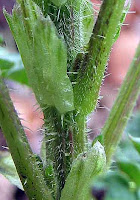One of the things I love about England is that you don’t get poison ivy. Poison ivy, ugh. I have a backyard full of it (plus other assorted vines for variety) and I’ve just spent a fun hour drinking coffee with a landscape architect and talking about gardening and writing.
 Did you know Jefferson planted poison ivy for decorative purposes at Monticello? Of course, Jefferson himself didn’t actually plant it–he owned people to do that sort of thing for him. And the only saving grace of poison ivy is that it’s gorgeous in the fall. The rest of the time, ugh again. The only organic way of removing it is to get goats in to eat it.
Did you know Jefferson planted poison ivy for decorative purposes at Monticello? Of course, Jefferson himself didn’t actually plant it–he owned people to do that sort of thing for him. And the only saving grace of poison ivy is that it’s gorgeous in the fall. The rest of the time, ugh again. The only organic way of removing it is to get goats in to eat it.
 England (and Europe and the Himalayas) does have one native plant with uncomfortable side effects, and that’s the stinging nettle. It may be native to certain parts of the US too; as ever, it’s a case of conflicting information. US nurseries often sell them in the herb sections. And the sting of a nettle is nothing compared to what poison ivy can do, unless you have an extreme allergic reaction or have the misfortune to fall naked into a patch of them (no I haven’t, but feel free to use in a book). Unlike poison ivy, nettles will sting you right away and you’ll know about it.
England (and Europe and the Himalayas) does have one native plant with uncomfortable side effects, and that’s the stinging nettle. It may be native to certain parts of the US too; as ever, it’s a case of conflicting information. US nurseries often sell them in the herb sections. And the sting of a nettle is nothing compared to what poison ivy can do, unless you have an extreme allergic reaction or have the misfortune to fall naked into a patch of them (no I haven’t, but feel free to use in a book). Unlike poison ivy, nettles will sting you right away and you’ll know about it.
 Here’s a close up of the business end of a stinging nettle–it’s those little hairs that do the damage.
Here’s a close up of the business end of a stinging nettle–it’s those little hairs that do the damage.
But it’s a truly wonderful plant. Steamed or boiled, the nettle loses its sting and is edible, medicinal, and can be used to make fabric and rope. Regency country-dwellers and stillroom managers would certainly have known of the virtues of a plant that has been around for centuries, and almost always connected with human habitation. Here’s a quote from British naturalist and writer Richard Mabey:
The wooded sites of Romano-British villages on the Grovely Ridge near Salisbury are still dense with nettles subsisting on the remains of an occupation that ended 1,600 years ago.
Nettles can be used to make tea and beer, boiled like other greenstuffs, and are high in vitamin C. See A Modern Herbal for the many uses of the plant, including these couple of interesting functions.
Although in Britain upwards of thirty insects feed solely on the Nettle plant, flies have a distaste for the plant, and a fresh bunch of Stinging Nettles will keep a larder free from them.
If planted in the neighbourhood of beehives, it is said the Nettle will drive away frogs.
 Nettles were also made to make cloth until early in the 20th century, and certainly in the Regency. Because the fibers are hollow, the fabric breathes, keeping you cool in the summer and warm in the winter. Most nettle fabric is produced now in the Himalayas, and may well make a comeback now hemp and bamboo have become popular for clothing.
Nettles were also made to make cloth until early in the 20th century, and certainly in the Regency. Because the fibers are hollow, the fabric breathes, keeping you cool in the summer and warm in the winter. Most nettle fabric is produced now in the Himalayas, and may well make a comeback now hemp and bamboo have become popular for clothing.
 You can buy gorgeous nettle shawls at the Bamboo Fabric Store and the fabric in this section.
You can buy gorgeous nettle shawls at the Bamboo Fabric Store and the fabric in this section.
So my question of the day is do you own any nettle clothing or have you drunk nettle tea? Or eaten any foodstuffs that grow wild–young, tender dandelion leaves in salads, for instance? Or, share your poison ivy or stinging nettle experiences with us!
